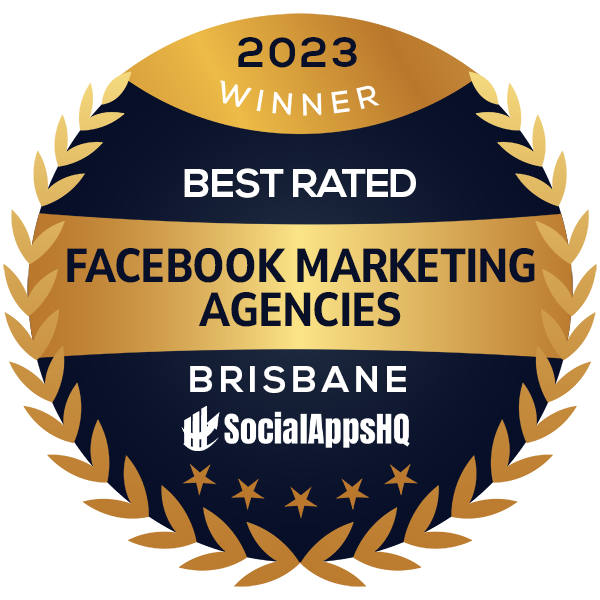In today’s digital age, it’s crucial to optimise your website for success. It serves as your virtual storefront, representing your brand, products, and services. By enhancing various aspects of your website, you can improve its performance, visibility, and user experience.
Understanding Your Target Audience
To optimise your website for maximum impact, it’s crucial to have a deep understanding of your target audience. By defining your target audience and their needs, conducting market research, and creating user personas, you can tailor your website’s content and design to effectively engage and convert your ideal customers.
Define your target audience and their needs:
Identify ideal customers based on demographics, interests, and pain points.
Use surveys, social media listening, and customer feedback to gather insights.
Conduct market research and user analysis:
Analyse competitors to identify strengths and weaknesses.
Stay updated on industry trends and benchmarks.
Utilise web analytics, heatmaps, and user recordings to understand user behaviour.
Create user personas for effective targeting:
Develop fictional representations of target audience segments.
Consider demographics, psychographics, goals, and website preferences.
Understanding your target audience lays the foundation for effective website optimisation. By defining your audience, conducting research, and creating personas, you can tailor your website to resonate with and meet the needs of your ideal customers.
Enhancing User Experience (UX)
In today’s digital landscape, providing an exceptional user experience (UX) is crucial for the success of your website. By prioritising usability and creating a seamless browsing journey for your visitors, you can significantly enhance engagement, increase conversions, and foster long-term customer relationships. Let’s explore some key strategies to optimise the UX of your website.
Streamlining website navigation and structure:
Effective website navigation is the backbone of a user-friendly experience. Ensure your navigation menu is intuitive, clearly labelled, and strategically placed for easy access. Organise your content into logical categories and subcategories, making it effortless for visitors to find what they’re looking for. Incorporate search functionality to provide a quick and convenient way to locate specific information.
Optimising page loading speed
In today’s fast-paced digital world, users expect instant gratification. Slow-loading pages can lead to frustration and high bounce rates. Optimise your website’s performance by compressing images, minifying code, and leveraging caching techniques. Prioritise speed by choosing a reliable hosting provider and regularly monitoring your website’s performance using tools like Google PageSpeed Insights.
Implementing responsive design for mobile-friendliness
With the rise of mobile devices, ensuring your website is responsive and mobile-friendly is paramount. Responsive design allows your site to adapt seamlessly to different screen sizes and resolutions, providing an optimal viewing experience for users across devices. Embrace a mobile-first approach by prioritising mobile usability during the design process. Test your website on various devices to ensure consistent functionality and visual appeal.
Incorporating intuitive user interfaces and clear calls-to-action
Make it easy for users to interact with your website by incorporating intuitive user interfaces (UI) and clear calls-to-action (CTA). Use visually appealing buttons and links that are easily recognisable and distinguishable. Guide users through their journey by providing clear instructions and visual cues. Ensure your CTAs are strategically placed throughout your website to encourage desired actions, such as making a purchase, subscribing to a newsletter, or contacting your business.
By implementing these strategies, you can create a user experience that delights and engages your visitors, ultimately driving them towards your desired conversions. Remember, a seamless UX not only benefits your users but also reflects positively on your brand, establishing trust and loyalty. Stay tuned for the next chapter, where we will explore the importance of compelling website content.
Search Engine Optimisation (SEO)
Search Engine Optimisation (SEO) is essential for improving a website’s visibility and organic ranking in search results. In this chapter, we’ll explore key strategies to enhance your website’s visibility and attract valuable organic traffic. Let’s unlock the potential of SEO and reach your target audience effectively.
Conducting Keyword Research for Relevant Content
Effective search engine optimisation starts with thorough keyword research. By understanding the keywords and phrases your target audience is using to search for information, products, or services related to your business, you can create relevant and engaging content that aligns with their needs. Use keyword research tools to identify high-volume keywords with moderate competition. Incorporate these keywords naturally into your website’s content to improve its visibility in search engine results.
Optimising On-Page Elements (Meta Tags, Headings, URLs)
Optimising on-page elements is crucial for improving your website’s search engine rankings. Start by optimising meta tags, including the meta title and meta description, with relevant keywords and compelling descriptions that entice users to click through. Use descriptive headings (H1, H2, etc.) to structure your content and make it easier for search engines and users to understand. Additionally, ensure your URLs are concise, descriptive, and include keywords whenever possible.
Creating High-Quality and Engaging Content
Content plays a pivotal role in SEO. Aim to create high-quality, informative, and engaging content that meets the needs of your target audience. Craft articles, blog posts, and other forms of content that provide valuable insights, answer common questions, and offer practical solutions. Incorporate relevant keywords naturally throughout the content while maintaining a conversational and reader-friendly tone. Remember to optimise images and multimedia elements by using descriptive alt tags and captions.
Building Authoritative Backlinks and Enhancing Website Authority
Backlinks are an essential factor in search engine algorithms, as they demonstrate the authority and credibility of your website. Seek opportunities to build high-quality backlinks from reputable websites in your industry or niche. Develop relationships with influencers, collaborate on guest blogging opportunities, and participate in industry forums or communities. Additionally, focus on creating valuable content that naturally attracts backlinks from other websites. Enhancing your website’s authority through backlinks will contribute to higher search engine rankings and increased organic traffic.
Remember, search engine optimisation is an ongoing process. Stay up to date with the latest SEO trends, algorithms, and best practices to ensure your website remains optimally positioned in search engine results. By implementing effective SEO strategies, you can improve your website’s visibility, drive targeted traffic, and ultimately enhance your online presence.
Conversion Rate Optimisation (CRO)
Maximising conversions is crucial for the success of your website. Here are key strategies to optimise your website’s conversion rate:
Identify conversion goals and metrics:
Clearly define the desired actions you want visitors to take on your website, such as making a purchase or filling out a contact form. Set up relevant metrics to track and measure the effectiveness of your conversion efforts.
Implement effective landing pages and forms
Create compelling landing pages that align with your conversion goals. Design them to be visually appealing, easy to navigate, and focused on driving action. Optimise forms by keeping them concise and user-friendly, reducing friction in the conversion process.
A/B testing and optimise website elements
Conduct A/B tests to compare different variations of key website elements, such as headlines, calls-to-action, and layouts. Analyse the results and make data-driven decisions to continuously improve and optimise your website’s performance.
Improve trust and credibility through testimonials and reviews
Showcase positive customer testimonials and reviews on your website to build trust and credibility. Social proof plays a significant role in influencing visitor decisions and boosting conversions.
By implementing effective conversion rate optimisation strategies, you can improve the user experience, increase conversions, and drive business growth. In the upcoming chapters, we’ll delve into the power of social media marketing. Stay tuned to continue optimising your website for maximum impact.
Tracking and Analytics

Tracking and analytics are essential for understanding the performance of your website and making data-driven decisions. Here are key steps to effectively track and analyse your website’s data
Setting up website analytics tools
Begin by implementing robust analytics tools such as Google Analytics. Set up the necessary tracking codes on your website to gather relevant data on visitor behaviour, traffic sources, and other valuable insights.
Monitoring key performance indicators (KPIs)
Define the KPIs that align with your business goals. Track metrics such as website traffic, bounce rate, conversion rate, and average session duration. Regularly monitor these KPIs to gain insights into the overall performance of your website.
Analysing data and making data-driven decisions
Dive into the analytics data to extract meaningful insights. Identify trends, patterns, and areas of improvement. Analyse user behaviour, traffic sources, and conversion funnels to identify potential bottlenecks and opportunities. Use this data to inform your decision-making process.
Continuous improvement through iterative testing and optimisation
Implement a culture of continuous improvement by conducting iterative testing and optimisation. Test different variations of website elements, such as headlines, layouts, and calls-to-action. Analyse the results and make data-driven adjustments to enhance user experience and drive better results.
By effectively tracking and analysing your website’s data, you can gain valuable insights into user behaviour, measure the effectiveness of your strategies, and make informed decisions to optimise your website for maximum impact.
To sum things up, optimising your website is crucial for achieving maximum impact. Here’s a brief summary and a call to action:
Recap of importance
Website optimisation improves user experience, increases conversions, and drives business growth. By streamlining navigation, optimising loading speed, implementing responsive design, and incorporating intuitive interfaces, you create a website that attracts organic traffic and delivers a seamless user experience.
Encouragement to take action
It’s time to optimise your website. Implement the strategies discussed in this article to unlock its true potential and achieve your goals.
Long-term benefits and growth
Website optimisation sets the stage for increased customer engagement, loyalty, and revenue generation. It provides a strong foundation for future marketing efforts and keeps you competitive in the digital landscape.
Take charge of your online presence. Optimise your website and embrace the opportunities ahead. Thank you for joining us on this journey. Stay tuned for more insights in our upcoming articles.





 Done Digital
Done Digital



